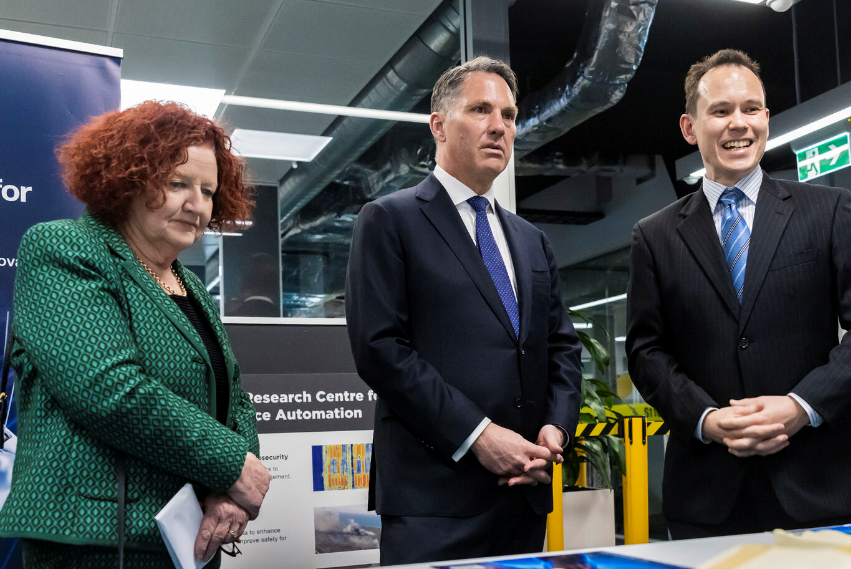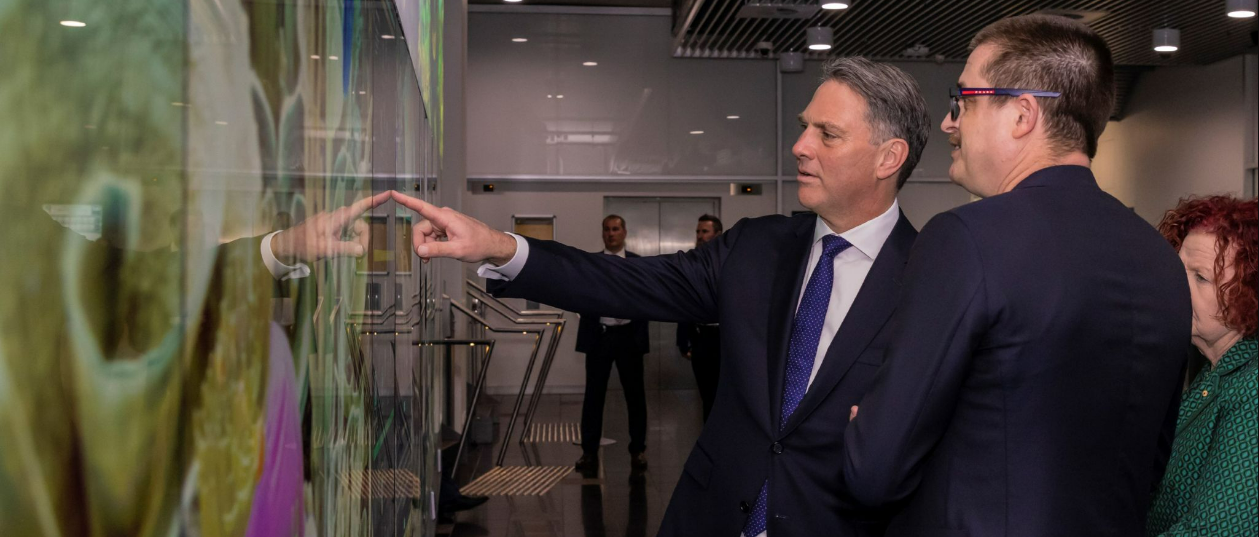
On August 8th 2022, Australia’s Acting Prime Minister, Deputy Prime Minister, and Minister for Defence, the Hon. Richard Marles visited the QUT (Queensland University of Technology). As hosted by the Centre for Robotics Joint Director and key ARC Industrial Transformation Training Centre for Joint Biomechanics CI, Prof. Michael Milford, he toured with the acting PM and Margaret Mary Sheil AO FAA FTSE, Vice Chancellor and President of Queensland University of Technology.
During the visit Prof. Milford showcased the capabilities of robots to assist in different manoeuvres which are translatable to the clinical and surgical context. Specifically, highlights from our work in Program 2.
Program 2 is focused on the use of robots and emerging ultrasound technologies for studying the bone and joint response to complex three-dimensional and time-varying loads experienced during physical activity. These technologies will be used for developing robot-assisted procedures for improving precision in current shoulder arthroplasty procedures and will enable in-vitro testing of orthopaedic devices for the assessment of current and novel orthopaedic devices. This will assist surgical methods for optimal joint function and precision tracking in human motion experiments for rehabilitation and the comprehensive assessment of clinical intervention.
On hand to demonstrate our robotic technologies was PhD student Mr Morgan Windsor. Surgical robots are an emerging technology used for shoulder arthroplasty as this procedure is the fastest growing joint replacement procedure in the world with growth expected to continue.
A major cause revision surgery is glenoid component failure such as loosening and wear with malpositioning being recognised as a key factor in component failure. Surgical planning systems are already a mature technology available to assist surgeons determine optimum implant positioning but tools to assist translating these plans into precise and accurate execution are limited and have low acceptance rates among surgeons. The use of surgical robotics has been shown to improve the precision and accuracy of implant positioning in other orthopaedic procedures such as knee arthroplasty but none are available for the shoulder.
Morgan’s research focuses on improving the existing “gold standard” in orthopaedic surgical robots, which use optical tracking markers attached to bone during the surgery. The issue with these are that these markers are time consuming to attach and register, require additional or larger incisions and limit how the surgical team can move in the operating room as they require line of sight with a base station while in use.
Both Mr. Windsor and Prof. Milford were quick to highlight advancements the Centre for Joint Biomechanics is making on tracking guidewire attachment for shoulder implants.
Along with the rest of the Program 2 team (Adj. Prof. Ashish Gupta, Prof. Peter Pivonka, and Dr. Jing Peng we wish to thank the QUT Centre for Robotics’ Centre Manager Ms Ilana Bolingford, Mr Paul Turner the Director of Government Relations and Protocol at QUT, and Mr David Russo the Government Relations Manager at QUT for co-ordinating the visit.

